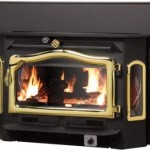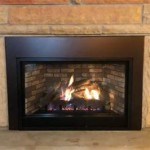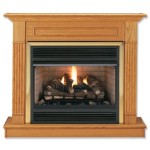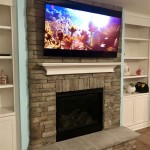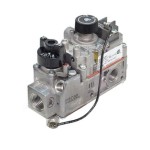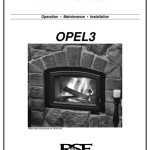Gas Fireplace Chimney: Understanding Requirements and Maintenance
A gas fireplace offers a convenient and aesthetically pleasing alternative to traditional wood-burning fireplaces. Central to its safe and efficient operation is the chimney, often referred to as a vent. Unlike wood-burning fireplaces that require complex masonry chimneys to handle creosote and high temperatures, gas fireplaces utilize specialized venting systems designed for the specific byproducts of gas combustion. Understanding the nuances of gas fireplace chimneys is crucial for homeowners to ensure safety, efficiency, and compliance with local building codes.
The primary function of a gas fireplace chimney is to safely exhaust combustion byproducts, including carbon dioxide, water vapor, and potentially harmful carbon monoxide, from the fireplace to the outside environment. These systems are designed to prevent the buildup of these gases within the home, which could pose significant health risks. Furthermore, proper venting helps maintain optimal fireplace performance by ensuring an adequate supply of oxygen for complete combustion.
Types of Gas Fireplace Venting Systems
Several types of venting systems are available for gas fireplaces, each with specific installation requirements and performance characteristics. The selection of the appropriate venting system depends on factors such as the fireplace model, the location in the home, and local building codes. The three most common types are: B-Vent, Direct Vent, and Vent-Free.
B-Vent Systems: B-Vent systems are double-walled metal pipes designed to exhaust combustion byproducts vertically through the roof. They rely on natural draft, where the hot gases rise through the chimney due to buoyancy. B-Vent systems are only suitable for natural draft gas fireplaces, which are less common in modern installations. These systems require a continuous vertical run with minimal horizontal offsets to ensure adequate draft. They draw combustion air from the room and exhaust flue gases upwards.
B-vents are characterized by their relatively low cost compared to direct vent systems. However, their reliance on natural draft makes them more susceptible to backdrafting, especially in tightly sealed homes. Backdrafting occurs when the pressure inside the home is lower than the pressure outside, causing the exhaust gases to flow back into the living space. For this reason, B-vent systems are often less desirable than direct vent systems in contemporary construction.
Direct Vent Systems: Direct vent systems are the most popular choice for modern gas fireplaces. These systems utilize a dual-pipe design, one to draw combustion air from outside the home and the other to exhaust combustion byproducts. This sealed combustion process eliminates the need to draw air from the room, improving energy efficiency and minimizing the risk of backdrafting. Direct vent systems can be vented horizontally through a side wall or vertically through the roof, offering greater installation flexibility.
The direct vent system's sealed nature ensures that indoor air quality is not compromised by the fireplace operation. Because the combustion process is self-contained, these systems are less affected by the pressure differences within the home. This makes them a safer and more reliable choice, especially in energy-efficient homes with tighter building envelopes. Direct vent systems must be installed according to the manufacturer's specifications, and the venting components must be specifically designed for the fireplace model.
Vent-Free Systems: Vent-free gas fireplaces do not require a chimney or venting system. They are designed to burn gas so cleanly that the combustion byproducts are considered safe for indoor air. These fireplaces are equipped with oxygen depletion sensors that shut off the gas supply if the oxygen level in the room drops to an unsafe level. While vent-free fireplaces offer installation convenience, they are subject to strict regulations and potential concerns regarding indoor air quality.
Although they are designed to be safe, vent-free systems release small amounts of water vapor and other combustion byproducts into the room. This can contribute to increased humidity levels and potentially exacerbate respiratory problems in some individuals. Many jurisdictions have restrictions or outright bans on vent-free appliances. Homeowners considering vent-free options should carefully review local building codes and consult with a qualified HVAC professional to assess the suitability of this type of fireplace for their home.
Proper Installation and Maintenance of Gas Fireplace Chimneys
The installation and maintenance of gas fireplace chimneys are critical for ensuring safe and efficient operation. Improper installation can lead to dangerous carbon monoxide leaks, while neglecting maintenance can reduce efficiency and increase the risk of malfunctions. Professional installation by a certified technician is highly recommended for all types of gas fireplace venting systems.
During installation, the technician will ensure that the venting system is properly sized for the fireplace, that all connections are sealed tightly, and that the system meets local building codes. The technician will also verify that the chimney termination point is located in a safe area, away from windows, doors, and other potential sources of air intake. A proper gas pressure test is also performed to ensure safe operation.
Regular maintenance of a gas fireplace chimney involves inspecting the venting system for any signs of damage, corrosion, or blockage. This includes examining the chimney cap, the vent pipes, and the area around the fireplace. Debris such as leaves, nests, or other obstructions should be removed to ensure proper airflow. The burner assembly and pilot light should also be inspected and cleaned as needed.
Homeowners can perform some basic maintenance tasks, such as visually inspecting the chimney and cleaning the burner area. However, more complex tasks, such as inspecting the interior of the vent pipes or repairing damaged components, should be left to qualified professionals. A professional inspection should be conducted at least annually to ensure that the venting system is in good working order.
Potential Problems and Troubleshooting
Several potential problems can arise with gas fireplace chimneys, impacting performance and safety. Recognizing these issues early and addressing them promptly can prevent more serious problems. Common issues include backdrafting, condensation, corrosion, and blockages.
Backdrafting: Backdrafting occurs when the exhaust gases flow back into the home instead of being vented outside. This can be caused by a variety of factors, including negative pressure within the home, a blocked chimney, or a poorly designed venting system. Signs of backdrafting include a smoky smell in the room, a flickering pilot light, or carbon monoxide detector activation. Addressing backdrafting issues requires identifying and correcting the underlying cause, which may involve improving ventilation in the home or modifying the venting system.
Condensation: Condensation can occur inside the chimney when the hot exhaust gases cool down too quickly. This moisture can corrode the vent pipes and lead to premature failure. Proper insulation of the chimney can help prevent condensation. Using the correct vent pipe material is also important. Single wall vent pipe should only be used within a room, and never used for a complete vent system.
Corrosion: Corrosion of the vent pipes can be caused by condensation, acidic combustion byproducts, or exposure to moisture. Regular inspections can identify signs of corrosion early, allowing for timely repairs or replacement of damaged components. Selecting corrosion-resistant materials, such as stainless steel, can help extend the life of the venting system.
Blockages: Blockages in the chimney can restrict airflow and lead to dangerous carbon monoxide buildup. These blockages can be caused by debris, nests, or structural damage to the chimney. Regular chimney inspections and cleaning can help prevent blockages. Installing a chimney cap can also help prevent debris from entering the vent pipe.
In addition to these common problems, other issues can arise, such as gas leaks or malfunctions in the fireplace itself. Homeowners should be familiar with the symptoms of these problems and know how to respond appropriately. If a gas leak is suspected, immediately evacuate the home and contact the gas company or a qualified technician. Regular maintenance and professional inspections are essential for ensuring the safe and efficient operation of the gas fireplace chimney.

Do Gas Fireplaces Need A Chimney Dreifuss

Venting A Gas Fireplace Through Existing Chimney Design Inserts

Gas Wood Burning Chimneys Similarities Fireplace Chimney Experts

If You Have A Gas Fireplace It May Or Not Chimney Flue

Vented Vs B Vent Direct Free Dixie S

Do Gas Fireplaces Need A Chimney Dreifuss
Understanding How Direct Vent Works Heat Glo

How To Vent A Gas Fireplace Without Chimney Vertical Care

The Types Of Gas Fireplaces Gaithersburg Md Fireplace Service

Fireplaces Gas Fireplace Guidelines Maintenance

